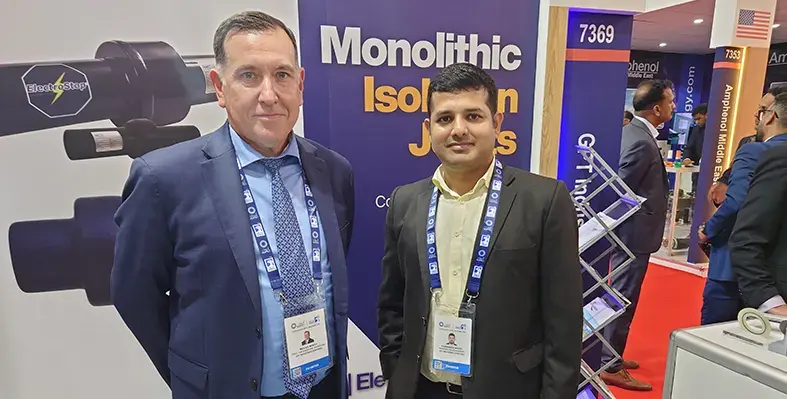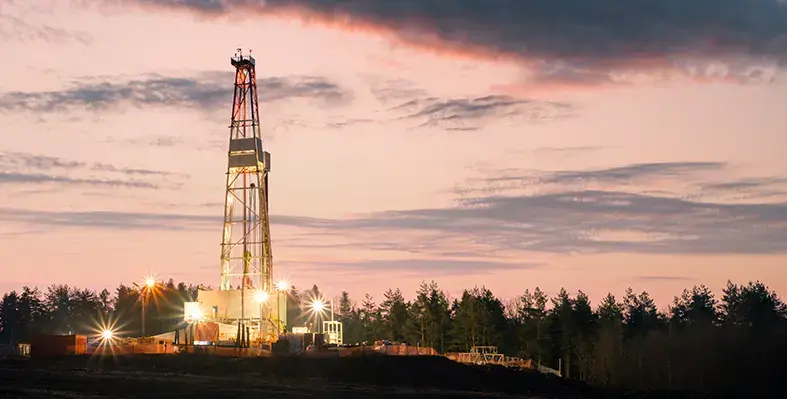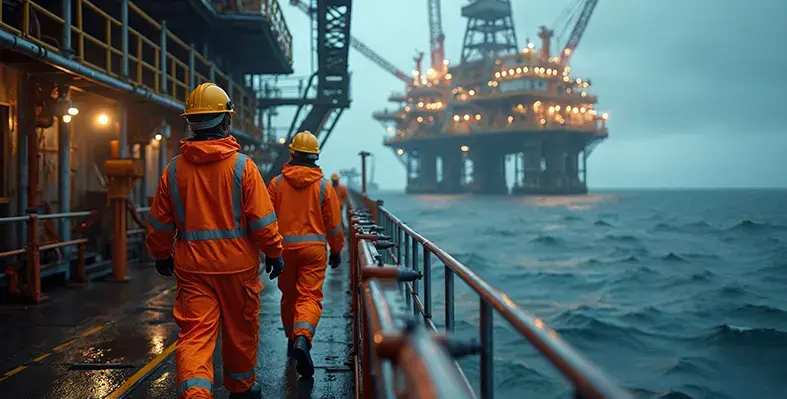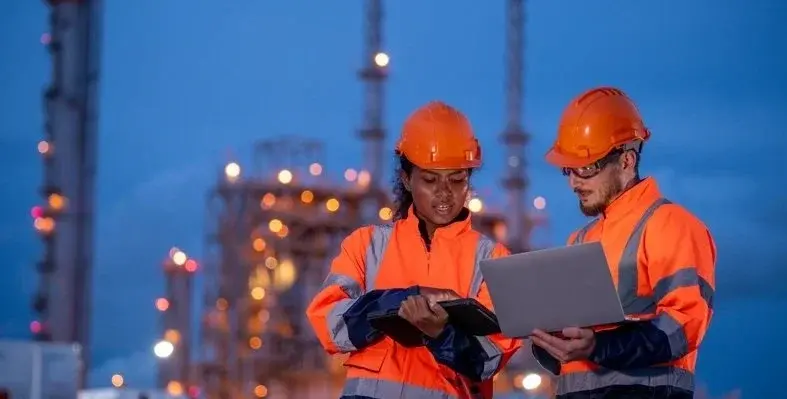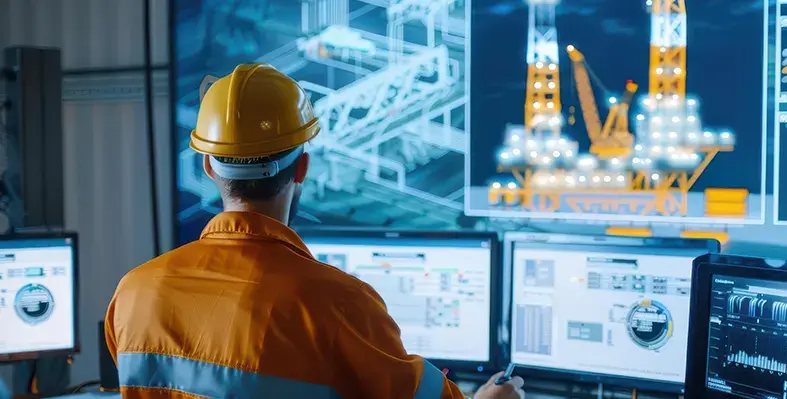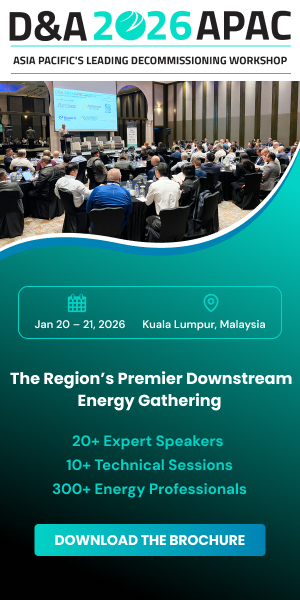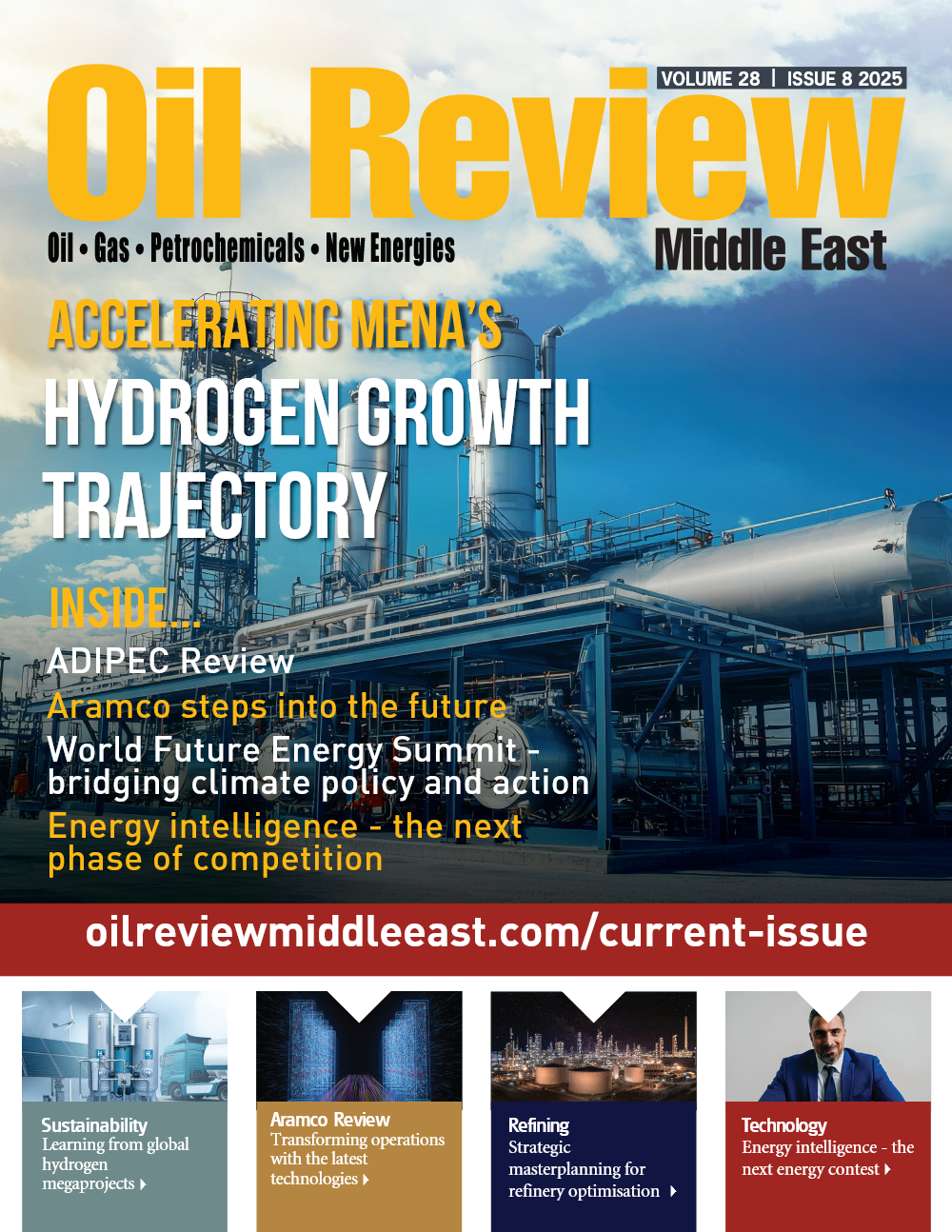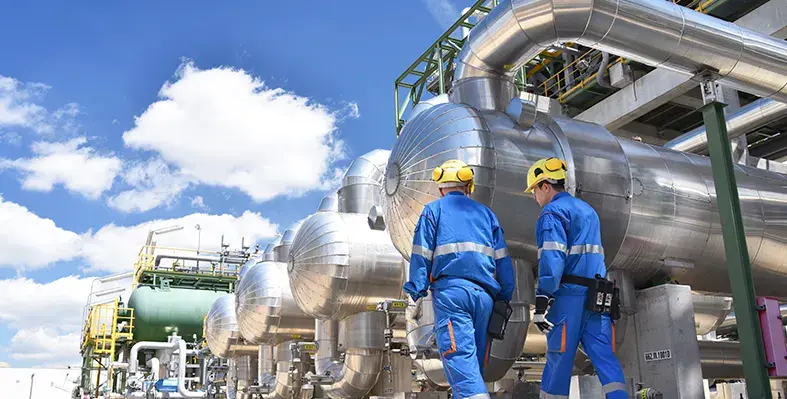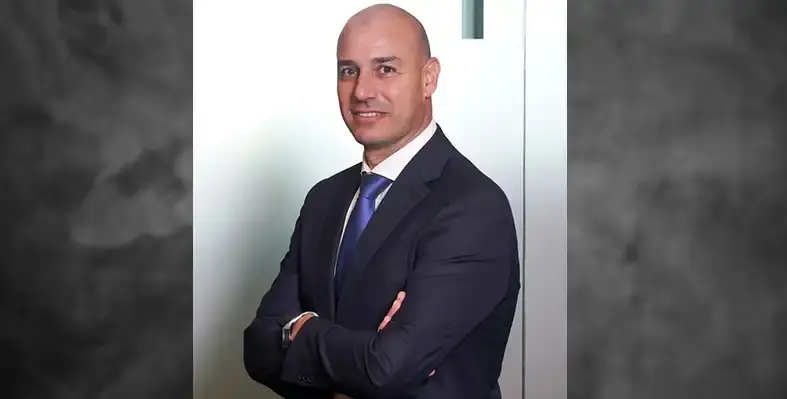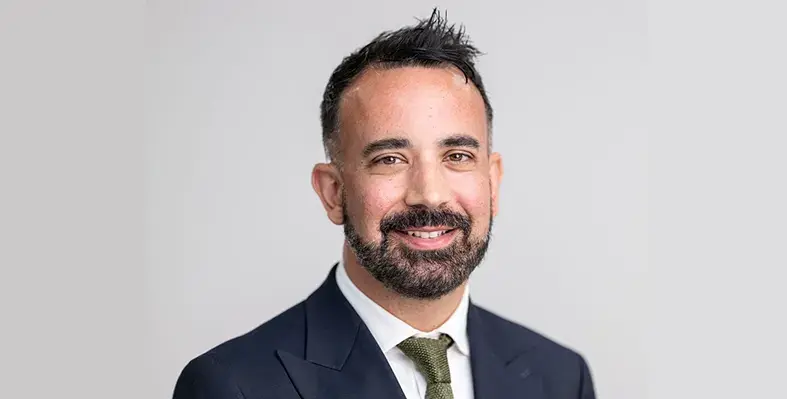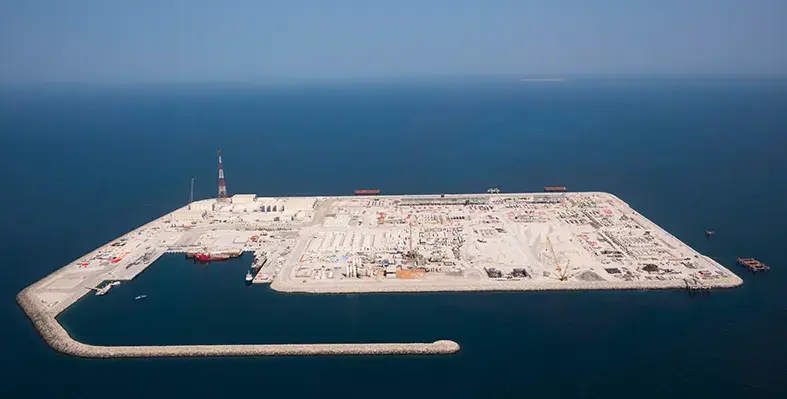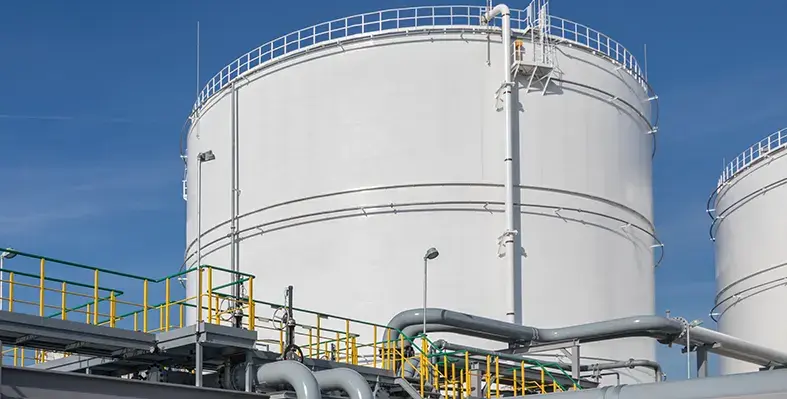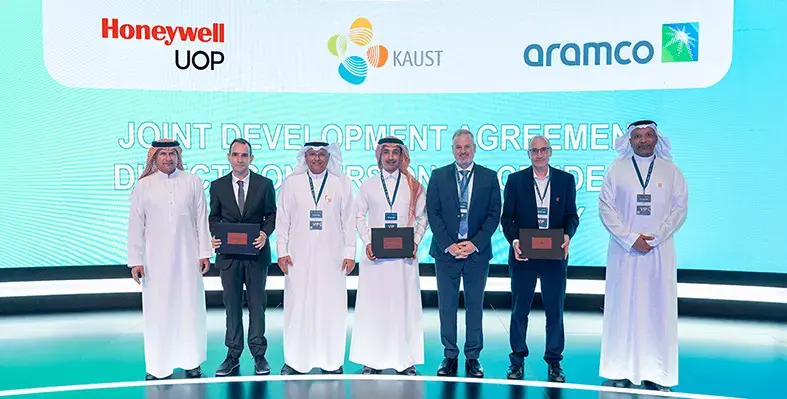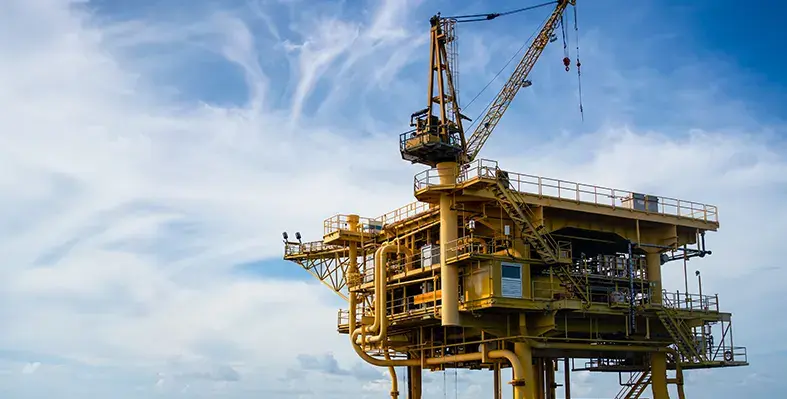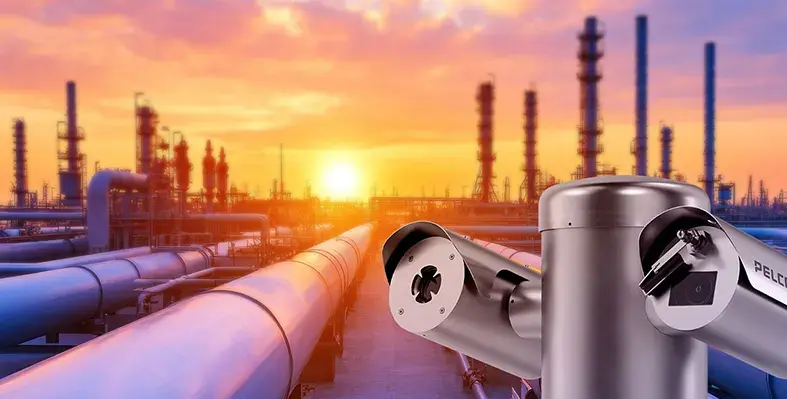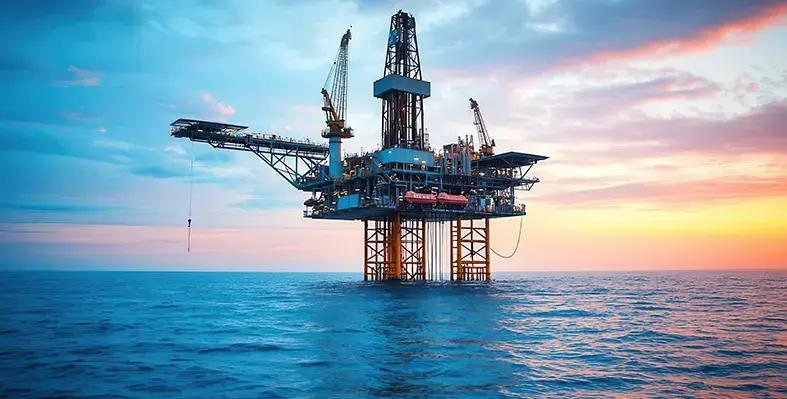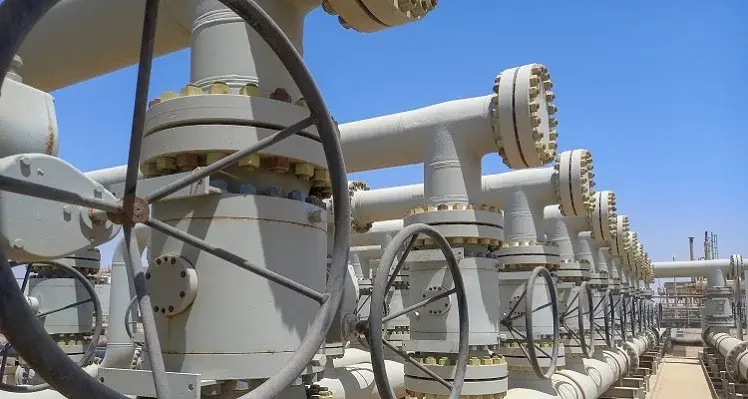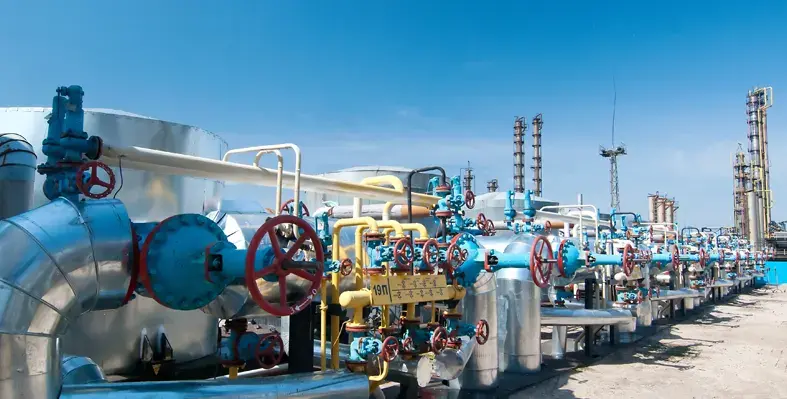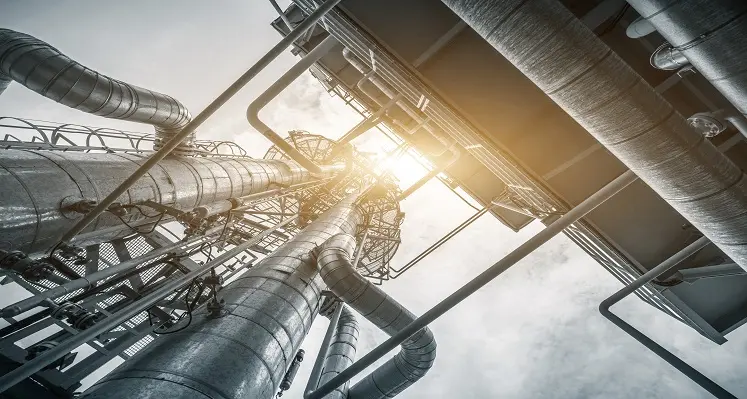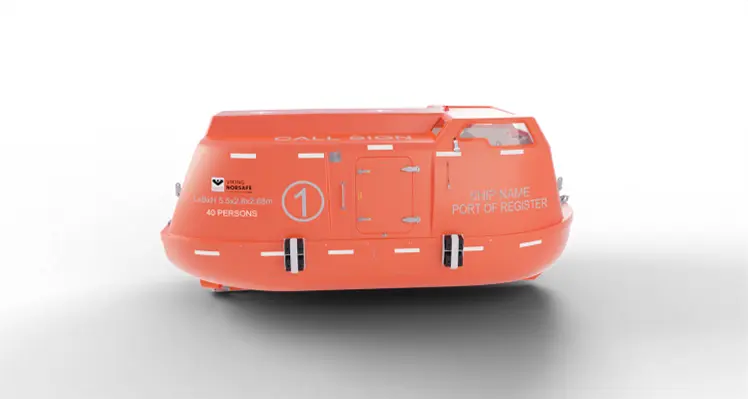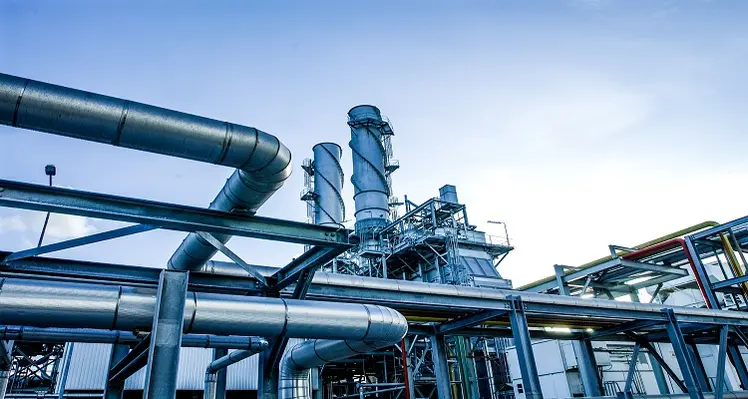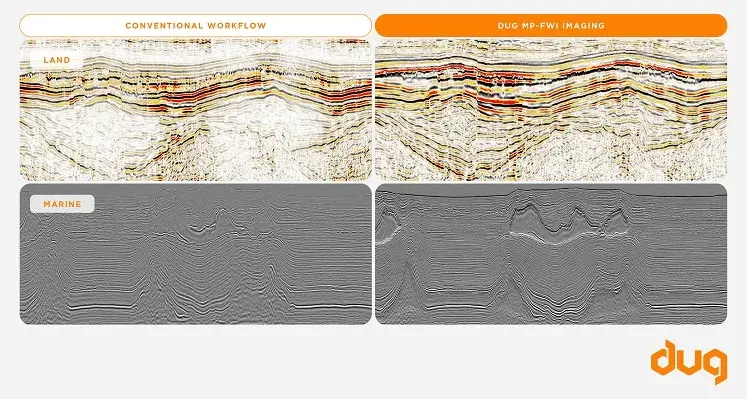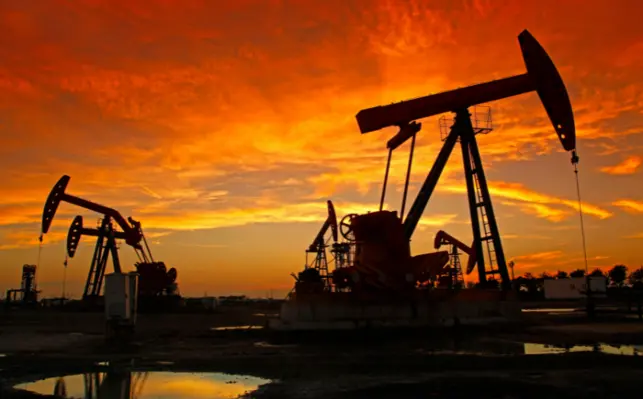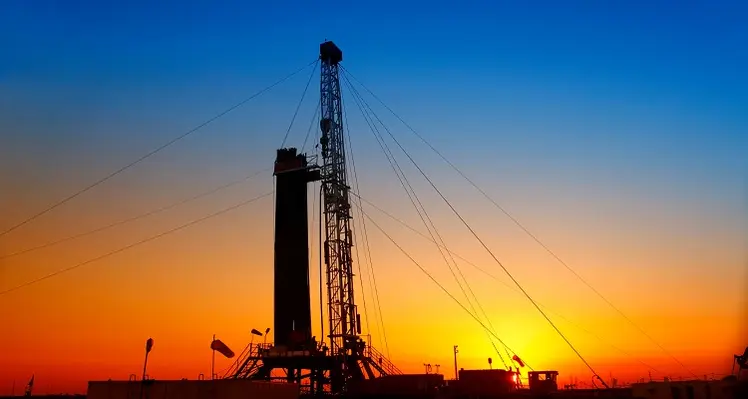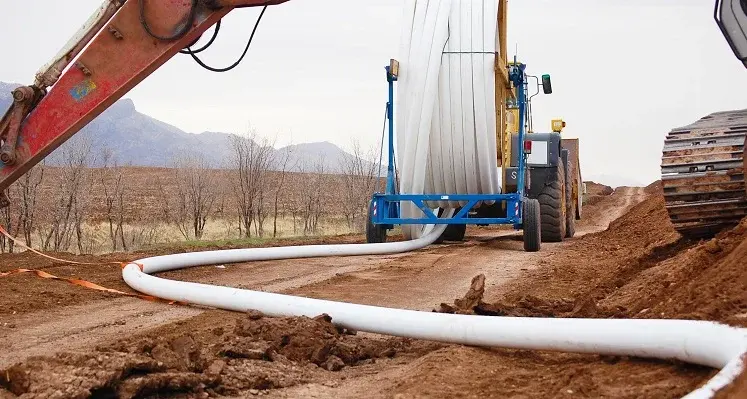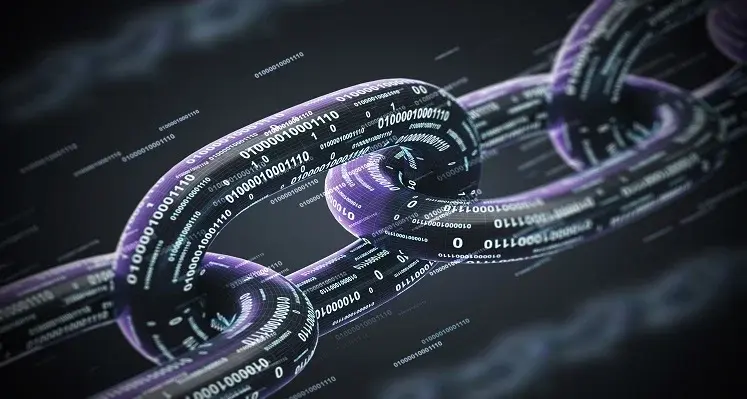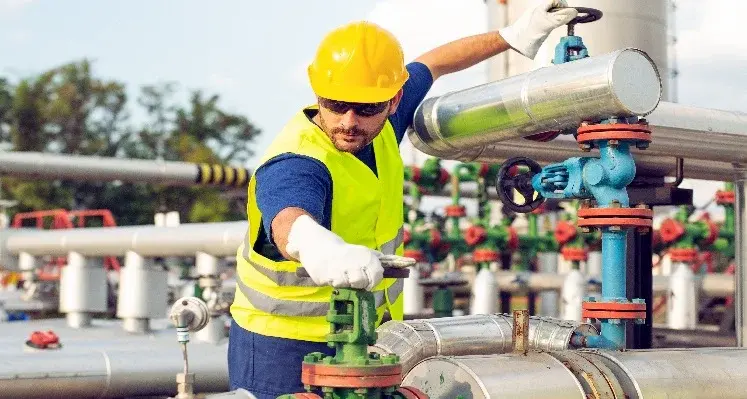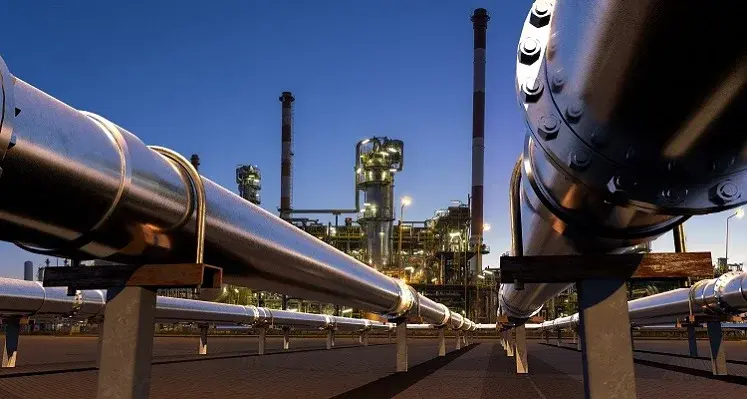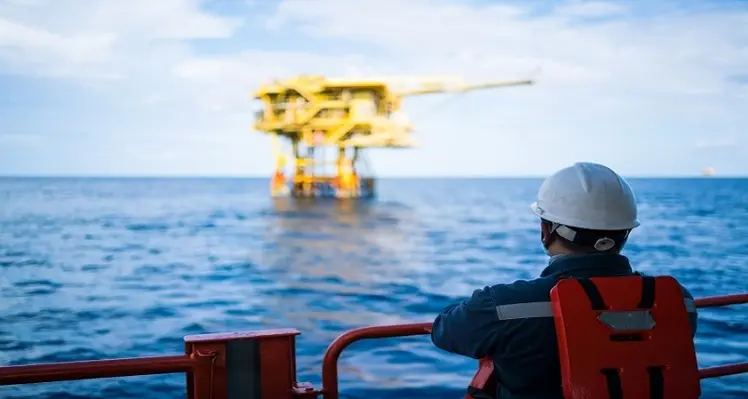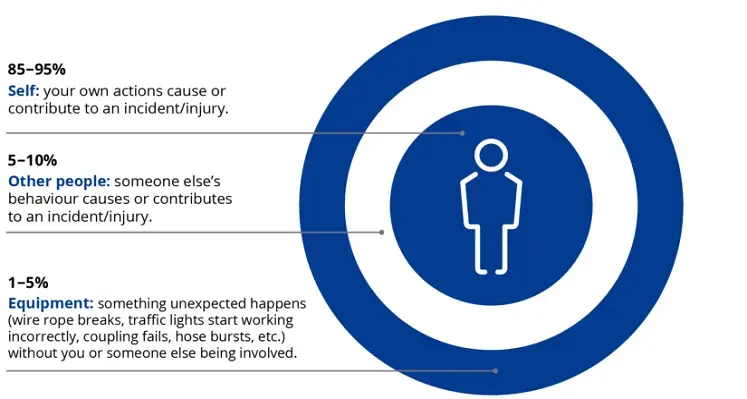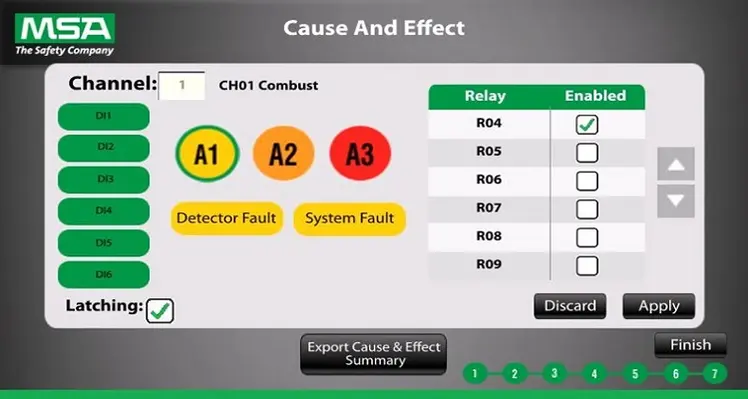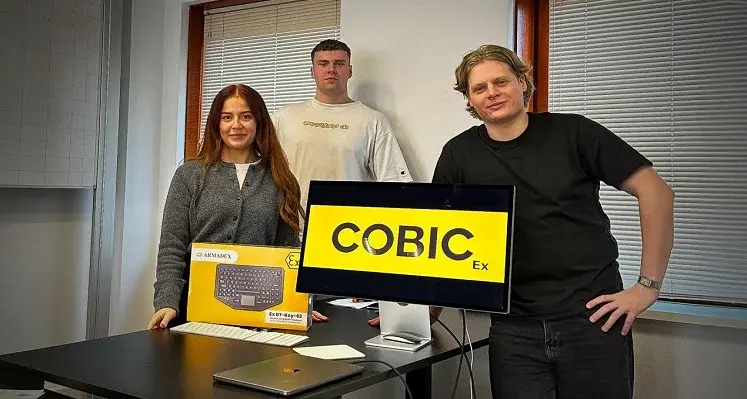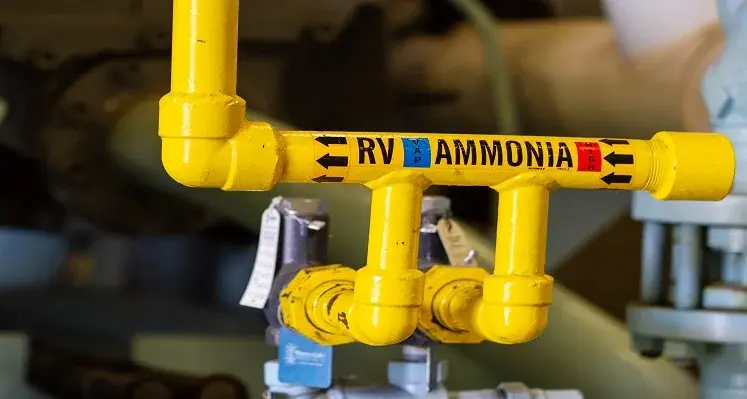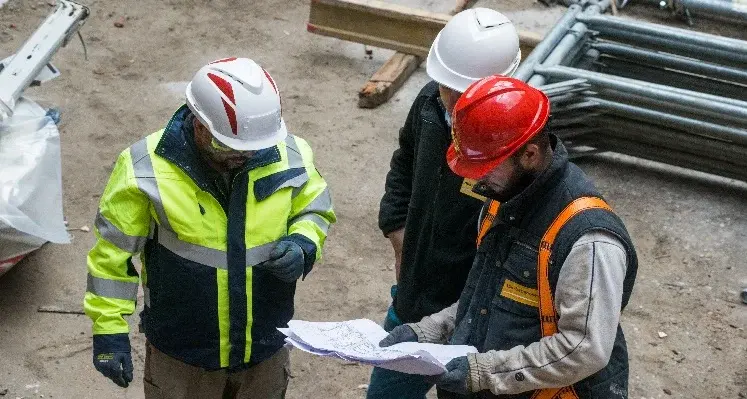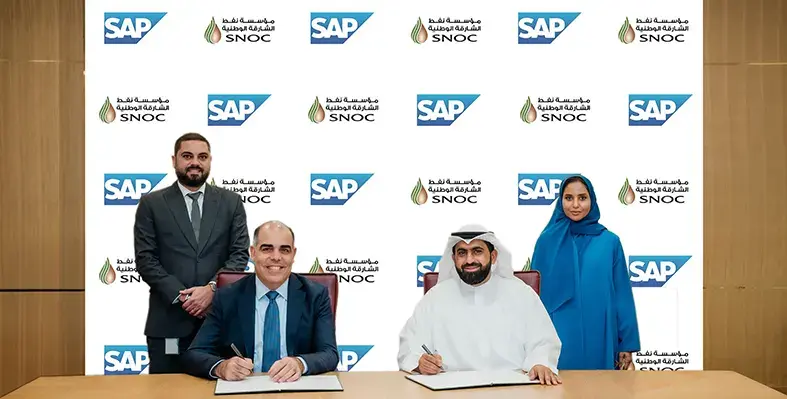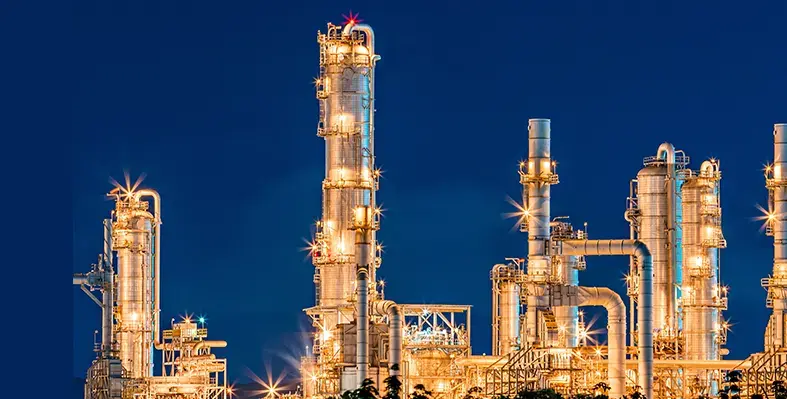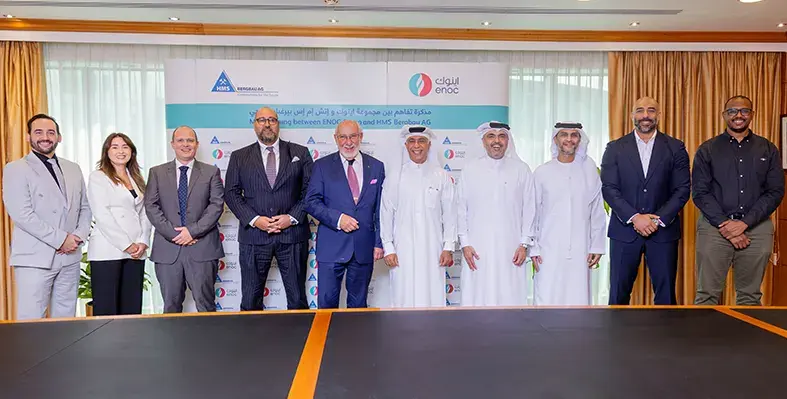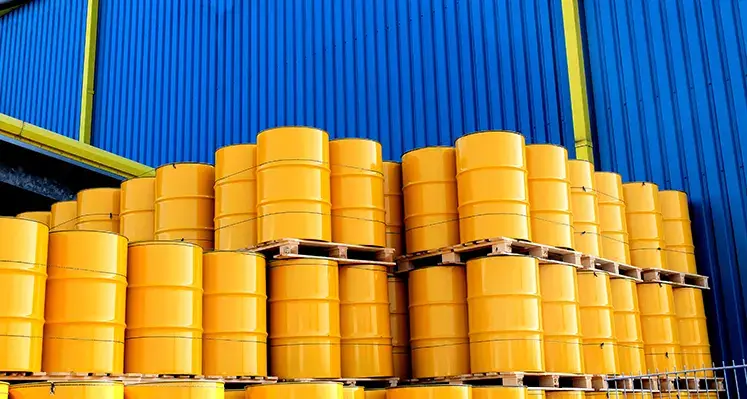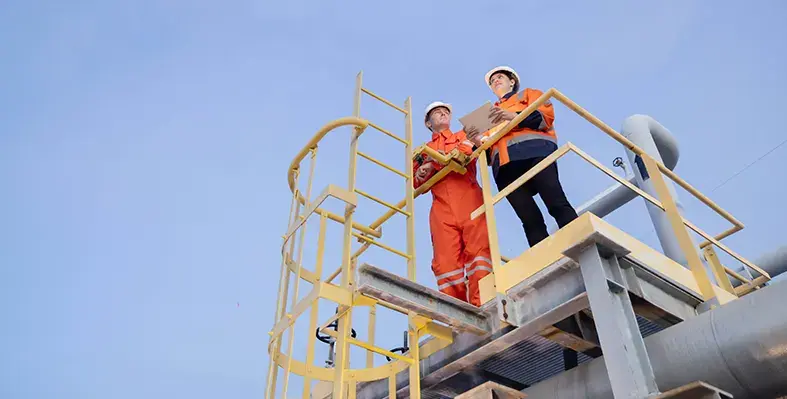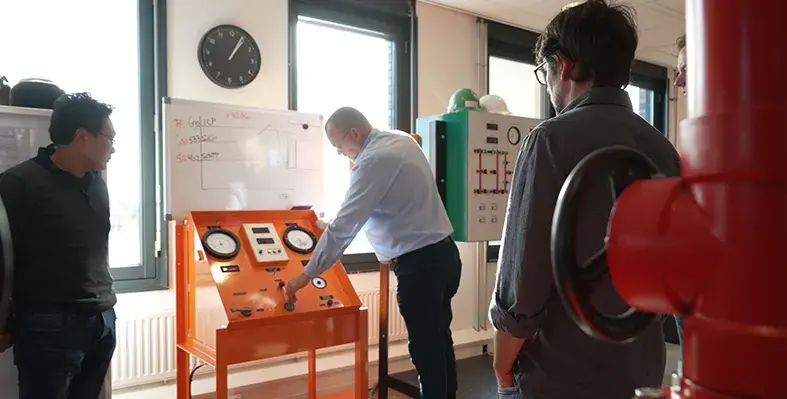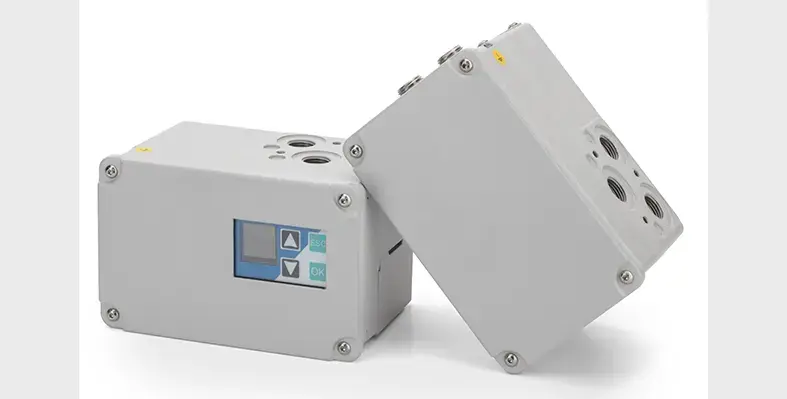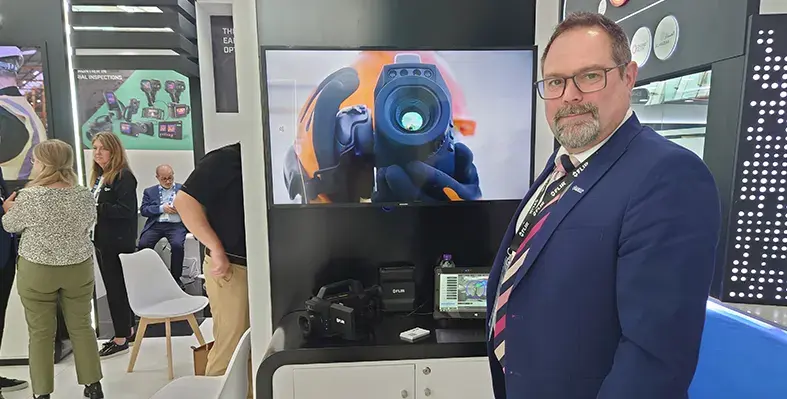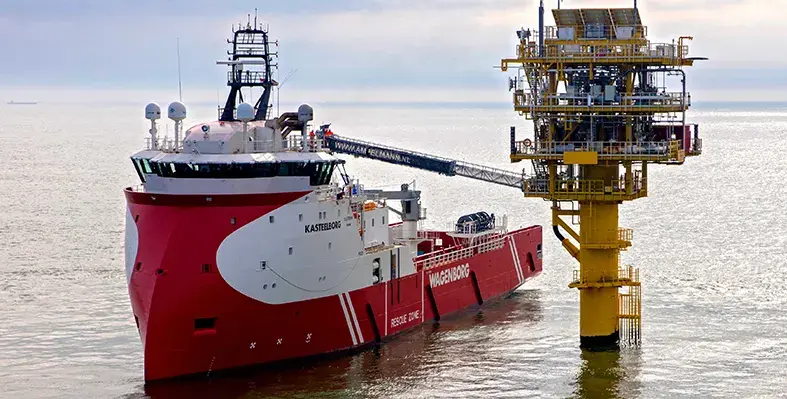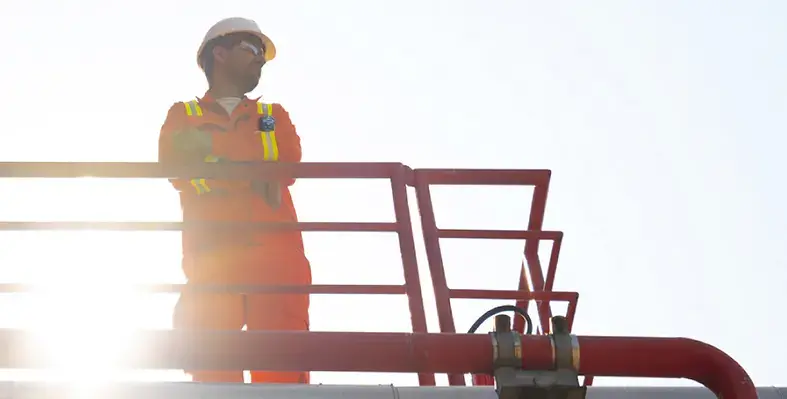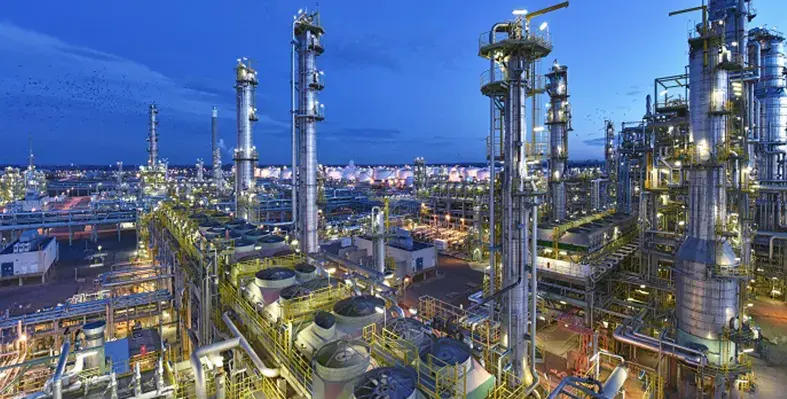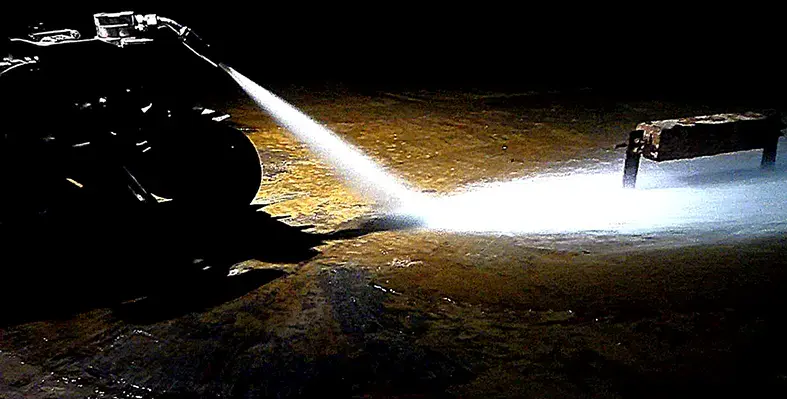In The Spotlight
Oil and gas employment expanded globally in 2024, driven by LNG project developments, and the Middle East remains the centre of world oil and gas employment, according to the IEA’s newly-released World Energy Employment 2025 report
Oil and gas supply has recovered most of the jobs lost in 2020, as global production capacity continues to expand. However, a number of major oil companies announced job cuts in 2025, in the face of lower oil prices and revenues.
Oil and gas production and distribution employed 12.4 million people in 2024, up 210,000 y-o-y, according to the report. Around two-thirds were employed in oil with the remainder in natural gas. Natural gas employment was boosted by new LNG facilities and associated manufacturing of related equipment. Oil and gas jobs slightly decreased in advanced economies, with growth now almost exclusively concentrated in emerging markets and developing economies (EMDEs).
The Middle East remains the centre of oil and gas employment, accounting for more than 20% of the sector’s global workforce. Oil and gas jobs represent two-thirds of total energy employment in the region, compared to a global average of just 16%, highlighting the sector’s dominant role in the regional economy and labour market. In 2024, Middle Eastern companies increased their oil and gas capital investments by 10%, creating around 83,000 new jobs. Countries in the region have invested heavily in the training and development of their national oil and gas workforces.
LNG remains the driving force behind natural gas employment growth. Worldwide investments in the sector increased by 11% since 2023, led by North America and the Middle East, which together made up two-fifths of total spending.
Oil and gas companies are adopting a range of strategies to manage uncertainty surrounding the sector’s long-term outlook. Some IOCs are increasingly shifting funds toward improving the production rates of existing fields with automation, improved drilling techniques and artificial intelligence to reduce the labour intensity of their operations. At the same time, IOCs are also investing in clean energy and reallocating resources to diversify and attract young talent.
Addressing skills gaps
The report warns of skills shortages and gaps, with applied technical roles such as electricians, pipefitters, line workers and plant operators in short supply. An ageing workforce is compounding the problem. At the same time, the supply of newly qualified workers is not keeping pace with the sector’s needs. To prevent the skills gap from widening further by 2030, the number of new qualified entrants into the energy sector globally would need to rise by 40% requiring an additional US$2.6 billion per year of investment globally, according to the IEA.
Targeted retraining and reskilling could help workers transfer from fossil fuel employment into other parts of the energy system that are growing, with 50% of fossil fuel workers said they would prioritise staying within the energy sector if seeking alternative employment.
The report notes that energy firms lag other sectors in artificial intelligence capabilities, with concentrations of AI-skilled workers about 40% lower than in technology, finance, education, and media. And while investment in AI skills and capabilities is rising in the energy sector, current use cases do not significantly reduce demand for applied technical workers in construction, operations, and maintenance, which are mostly manual roles dominated by tasks that AI is not currently well suited to replace.
“Energy has been one of the strongest and most consistent engines of job creation in the global economy during a period marked by significant uncertainties,” said IEA executive director Fatih Birol. “But this momentum cannot be taken for granted. The world’s ability to build the energy infrastructure it needs depends on having enough skilled workers in place. Governments, industry and training institutions must come together to close the labour and skills gap. Left unaddressed, these shortages could slow progress, raise costs and weaken energy security.”
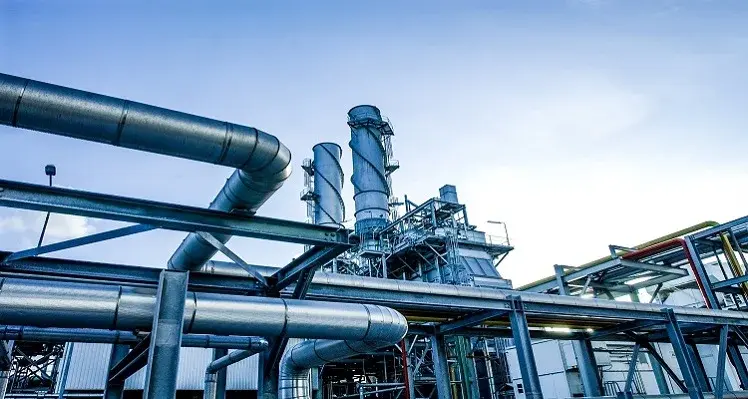
The companies will explore capital investments to upgrade and diversify production. (Image source: Adobe Stock)
ExxonMobil, Aramco and Samref have signed an agreement to look at a significant upgrade of the Samref refinery, in Yanbu, and the possibility of expanding it into an integrated petrochemical complex
The refinery currently has the capacity to process more than 400,000 barrels of crude oil per day, producing a diverse range of energy products including propane, automotive diesel oil, marine heavy fuel oil, and sulphur. The companies will explore capital investments to upgrade and diversify production, including high-quality distillates that result in lower emissions and high-performance chemicals, as well as ways to improve the refinery’s energy efficiency and reduce emissions from operations through an integrated emissions-reduction strategy.
The companies will commence a preliminary front-end engineering and design phase for the proposed project, which would aim to maximise operational advantages, enhance Samref’s competitiveness and help to meet growing demand for high-quality petrochemical products in the Kingdom.
Samref is a joint venture between Aramco and Mobil Yanbu Refining Company Inc., a wholly owned subsidiary of Exxon Mobil Corporation.
Mohammed Y. Al Qahtani, Aramco Downstream president, said, “This next phase of Samref marks a step in our long-term strategic collaboration with ExxonMobil. Designed to increase the conversion of crude oil and petroleum liquids into high-value chemicals, this project reinforces our commitment to advancing Downstream value creation and our liquids-to-chemicals strategy. It will also position Samref as a key driver in the growth of the Kingdom’s petrochemical sector.”
Jack Williams, Exxon Mobil Corporation senior vice president, added, “We value our partnership with Aramco and our long history in Saudi Arabia. We look forward to evaluating this project, which aligns with our strategy to focus on investments that allow us to grow high-value products that meet society’s evolving energy needs and contribute to a lower-emission future.”
An integrated energy and chemicals company, Aramco, in partnership with neutral-atom quantum computing firm, Pasqal, deployed Saudi Arabia’s first quantum computer for industrial applications
Installed at Aramco's data centre in Dhahran, this marks a significant quantum applications development in multiple sectors in the region, including energy, materials, and industrial.
While aiding Aramco's operational efficiency strategies, the development gives Pascal's quantum exploration solutions a wider reach.
Ahmad O. Al-Khowaiter, Aramco EVP of Technology & Innovation, said, “Aramco is an established technology leader, which continues to innovate through the development and deployment of advanced digital solutions that have tangible benefits. We are deploying AI and other technologies at scale to further enhance our operations, maximize efficiency and unlock value across our business. Our partnership with Pasqal is a natural progression and we are thrilled to pioneer next-generation quantum capabilities, harnessing significant opportunities presented by this new frontier in computing.”
Loïc Henriet, Pasqal CEO, said, "This is a historic milestone with Aramco. The deployment of our most powerful quantum computer yet is a piece of history and a landmark for the Middle East’s quantum future. Pasqal continues its expansion, delivering practical quantum power to industry."
Pasqal’s system installed at Aramco’s data center can control 200 qubits arranged in programmable two-dimensional arrays, offering a platform suitable for exploring advanced quantum algorithms and real-world use cases relevant to industrial operations.
-
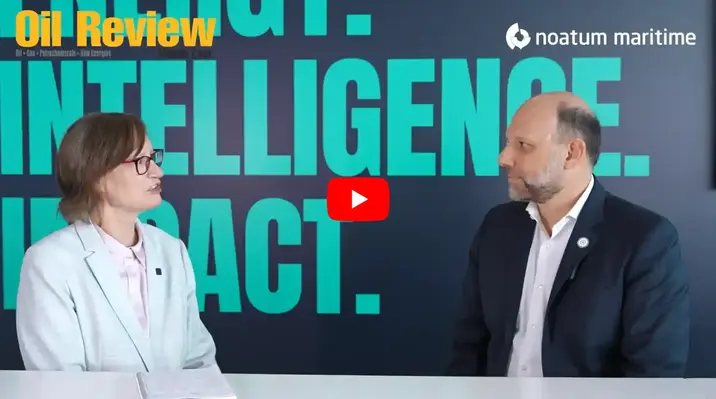
Exclusive Interview with Friedrich Portner, Maritime Cluster, AD Ports Group
-
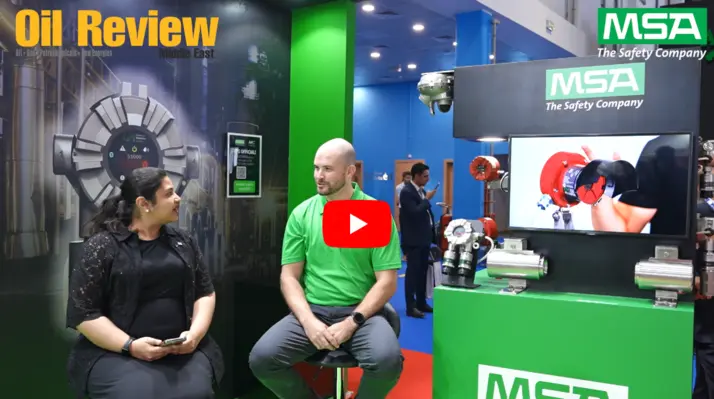
Exclusive Interview with Kevin Killeen, MSA Safety
-

Exclusive Interview with Maurits van Tol, Johnson Matthey
-
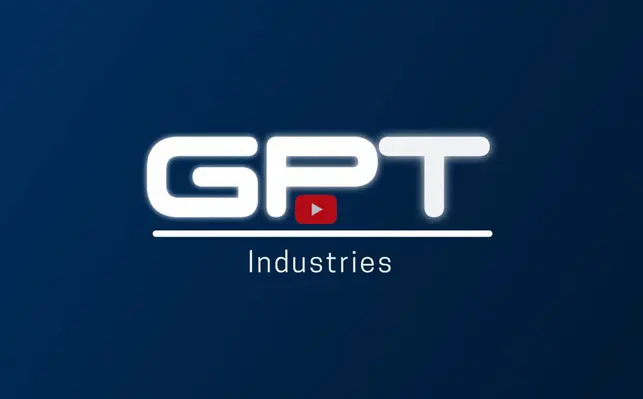
GPT Industries - Iso-Smart
-
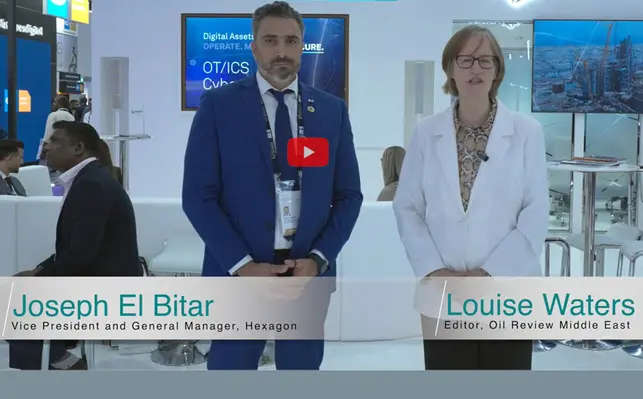
ADIPEC 2024 - Exclusive Interview with Joseph El Bitar, Hexagon
-
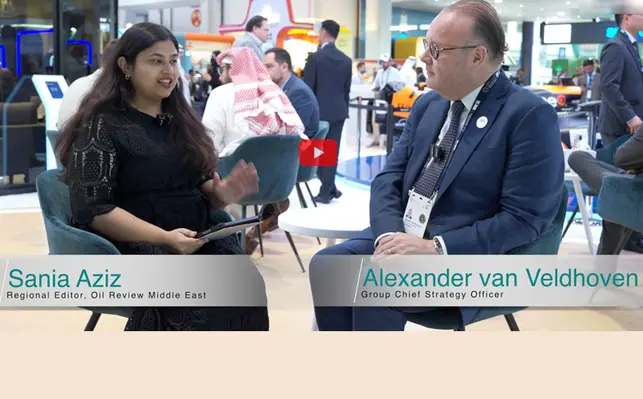
ADIPEC 2024 - Exclusive Interview with Alexander van Veldhoven, Bapco Energies
-
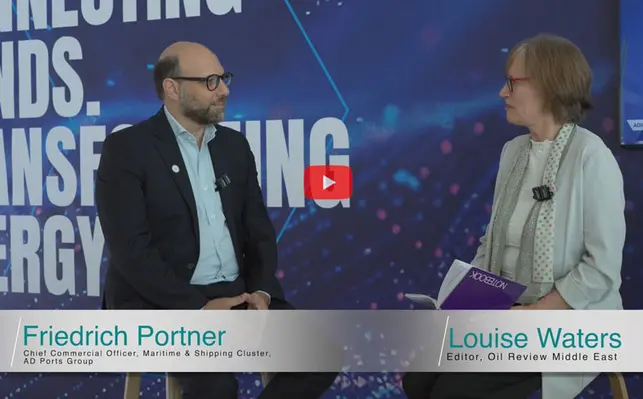
ADIPEC 2024 - Exclusive Interview with Friedrich Portner, Safeen Group
-
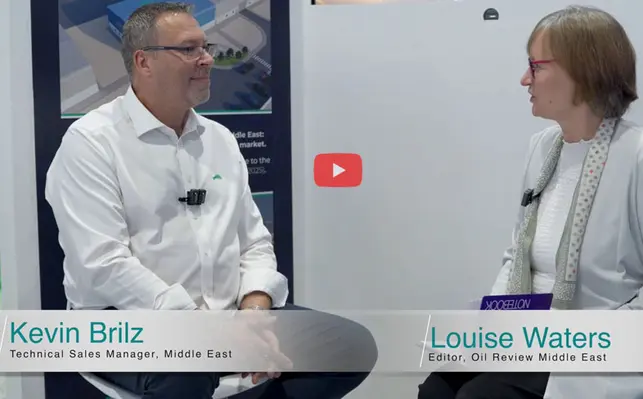
ADIPEC 2024 - Exclusive Interview with Kevin Brilz, Fishbones
-

ADIPEC 2024 - Exclusive Interview with Mohamed Malak, Fishbones
-
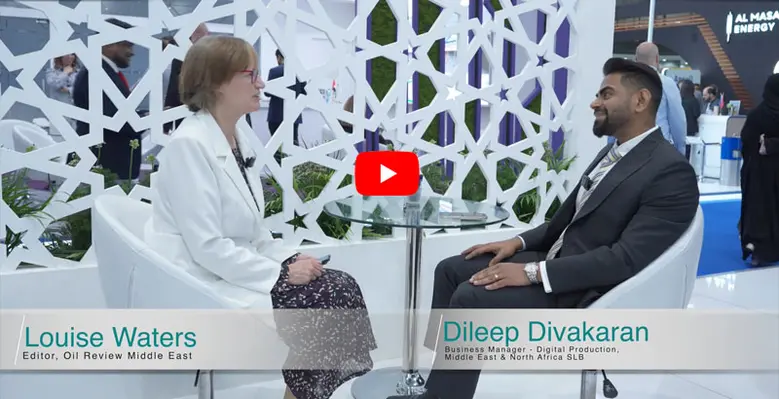
ADIPEC 2024 - Exclusive Interview with Dileep Divakaran, SLB
-
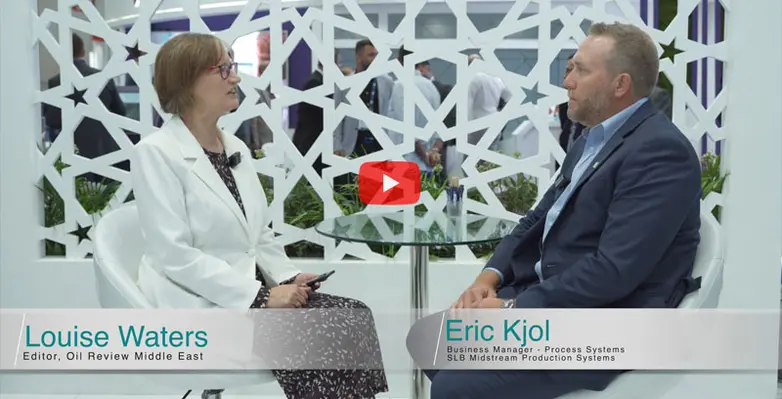
ADIPEC 2024 - Exclusive Interview with Eric Kjol, SLB
-
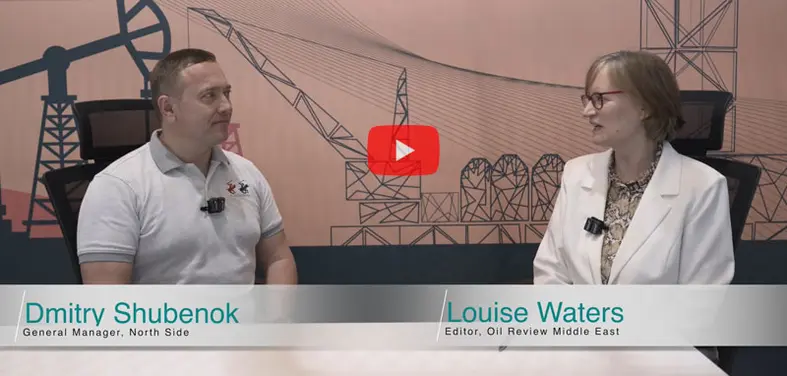
ADIPEC 2024 - Exclusive Interview with Dmitry Shubenok & Aleksandr Dolgikh, North Side
-
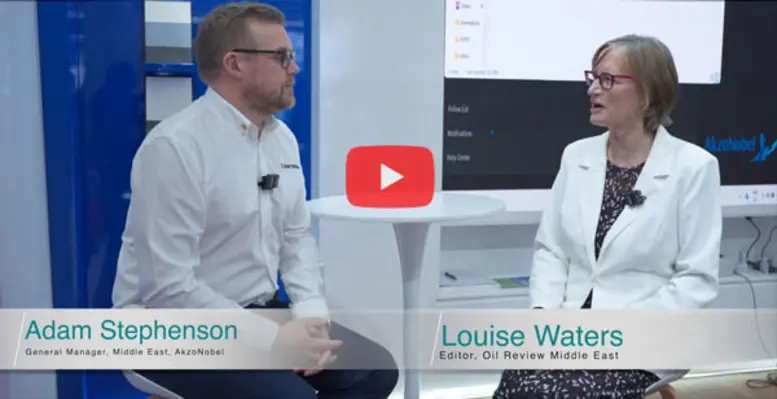
ADIPEC 2024 - Exclusive Interview with Adam Stephenson, AkzoNobel
-
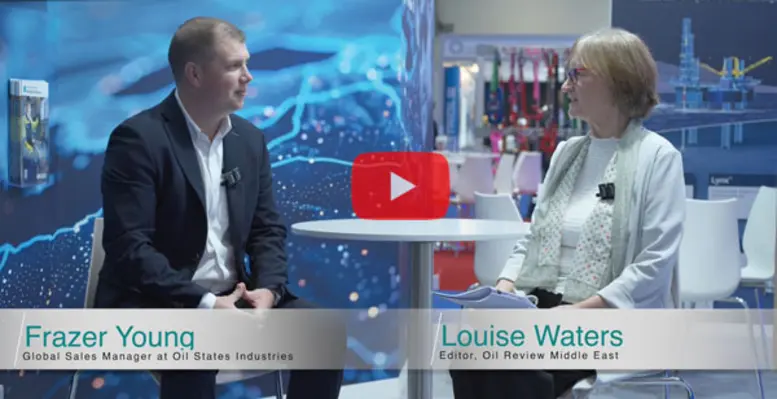
ADIPEC 2024 - Exclusive Interview with Frazer Young, Oil States
-
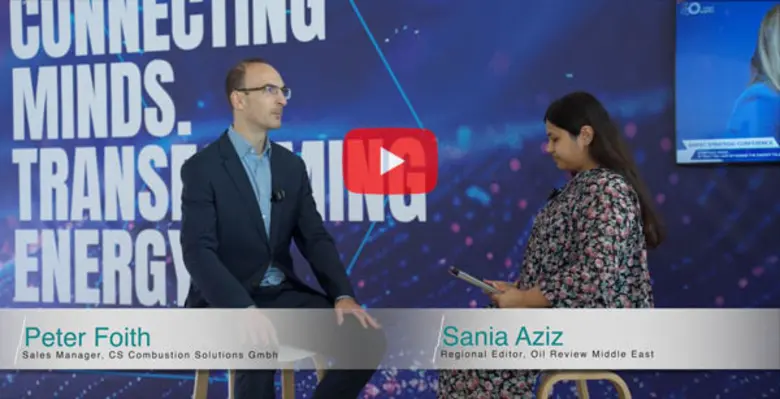
ADIPEC 2024 - Exclusive Interview with Peter Foith, CS Combustion Solutions GmbH
-
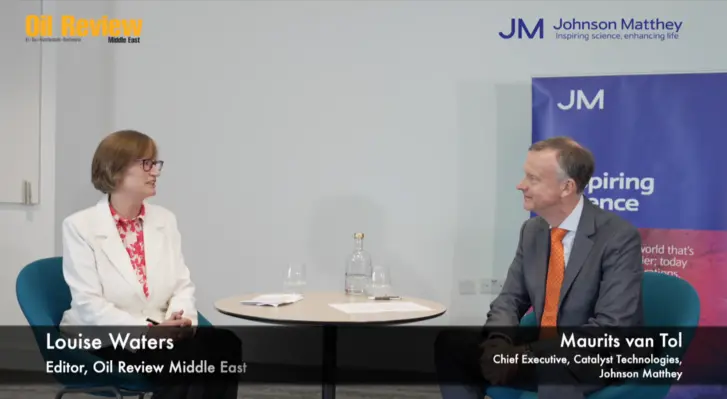
Exclusive interview with Maurits van Tol
-

Rockwell Automation interview with Sebastien Grau
Middle East-based natural gas company, Dana Gas, has made a significant gas discovery following the drilling of the North El-Basant 1 exploratory well in Egypt’s onshore Nile Delta.
As the company conducted initial analysis, the well indicated the presence of an estimated reserves of 15-25 bn cu/ft of gas. This encourages production expectations to exceed 8 mn cu/ft per day once the well is connected to the national network.
The promising results come from the fourth of the 11 development and exploration wells under Dana's US$100mn investment programme to support domestic gas production, increase reserves and meet growing energy demand. This programme has been deseigned to boost long-term production, accumulating approximately 80 bn cu/ft in recoverable gas reserves for vast coverage.
The company is now preparing to spud the fifth well in the programme, the Daffodil exploration well, in January 2026.
On the other hand, three wells were recompleted earlier this year, adding 9 mn standard cu/ft per day of production. Drilling and recompletion programmes are adding approximately 30 mn standard cu/ft per day of new production.
Richard Hall, CEO, Dana Gas, said, “The latest drilling success reinforces the value of our investment programme in Egypt and highlights the significant remaining potential within the Nile Delta. The North El Basant-6 result builds on the momentum of our earlier wells and supports our efforts to increase domestic gas supply and reserves. By increasing local gas production, the programme will help reduce Egypt’s reliance on imported LNG and fuel oil and is expected to generate more than one billion dollars in savings for the national economy over time.
“Our agreement with EGAS has enabled us to secure additional acreage under improved fiscal terms and to accelerate this new phase of drilling activity. We appreciate the strong cooperation from EGAS and the Ministry, and we remain committed to delivering the majority of our planned programme next year. Regular and timely payments from our partners are crucial to sustaining our investment programme in Egypt.”
Hythem Rizk, Middle East operations manager, Inspection at DNV shares lessons from Saudi Arabia in delivering local content and local value
A key pillar of the nation’s Vision 2030 blueprint, the “In-Kingdom Total Value Add” (IKTVA) program aims to increase the percentage of local spending on goods and services and domestic capabilities, as well as local talent.
Longer term the ambition is to diversify Saudi Arabia’s economy beyond oil, giving greater attention to local businesses and jobs for Saudi nationals. Paradoxically it is procurement power, wielded through the likes of state-owned oil giant Aramco, that means the country is able to drive these initiatives.
Even now, just halfway through the decade, the program has delivered significant changes. Success is no longer measured by the number of projects delivered, but in the long-term value created for people and communities. These successes will chart Saudi Arabia’s course for decades to come.
Just two years ago, DNV’s Inspection business unit began its journey in Saudi Arabia with a clear mission to support the Kingdom’s ambitious development under Vision 2030. What started as a focused partnership with Aramco in the oil and gas sector has since evolved into a dynamic, multi-sector presence that reflects both Saudi Arabia’s transformation and DNV’s commitment to sustainable growth and technological excellence.
The company’s first major milestone came with one of Aramco’s largest inspection contracts, providing support for all of its CAPEX projects across the Kingdom. This achievement set a precedent for long-term collaboration on critical national infrastructure programs that underpin Saudi Arabia’s energy and industrial future. But of course, this work was guided by the IKTVA program.
Changing the game
For those businesses that are established in the Kingdom and have been for years, the IKTVA program has changed the game. For DNV, it meant making localisation and skills development central to our business strategy, ensuring that our growth in the region directly supports the national workforce and knowledge economy.
At the heart of this is a commitment to support education and professional development, including partnering with local institutes to sponsor Saudi students in technical diploma programs, equipping them with the skills needed for future careers in inspection and quality control.
But Saudi Arabia is interested in outputs, not pledges. As such, it was a major milestone this year when DNV celebrated the graduation of its first cohort of young Saudi women, who completed a two-year diploma in quality control and building inspection. The program combined academic study with hands-on practical training, mentorship and on-the-job experience guided by DNV professionals. Many of these graduates are now preparing to join the workforce, contributing to Saudi Arabia’s growing industrial and engineering sectors. It is these young professionals that represent the future of Saudi talent and innovation.
Leading through Saudisation
But any localisation journey in the Kingdom must extend well beyond training. DNV’s Saudisation rate now exceeds 50%, the result of a sustained effort to prioritise local employment in both technical and leadership positions.
We have already appointed Saudi professionals to key roles, a prerequisite for long-term success in Saudi Arabia. It is more than just a box ticking exercise to ensure compliance with IKTVA expectations, it also genuinely embeds the business in the communities and sectors we serve.
By investing in locals and local supply chains, partnering with national organisations, and embedding ourselves in regional industry ecosystems, we can do our bit to create value that extends beyond business outcomes.
Bahri Chemicals, a subsidiary of logistics and transportation company Bahri, has signed a Contract of Affreightment (COA) with Luberef to strengthen Saudi Arabia’s base oil and petrochemicals sectors
Under the agreement, Bahri Chemicals will transport base oil produced in the kingdom from local ports to destinations across the Arabian Gulf and the west coast of India.
The strategic partnership will unlock synergies between the two companies, reflecting their shared commitment to advancing Saudi Arabia’s base oils sector, while also serving as an example of collaboration under the Saudi Inc. initiative, which strengthens partnerships and growth among Saudi companies.
Faisal Al Husseini, president of Bahri Chemicals, said, “This agreement with Luberef builds on our long-standing collaboration and reflects Bahri Chemicals’ commitment to delivering reliable, flexible, and customer-first maritime transportation solutions. Together with Luberef, we aim to create long-term value for our customers and contribute to the Kingdom’s economy.”
Eng. Samer A. Al-Hokail, President & CEO of Luberef, added, “This agreement represents another important step in our partnership with Bahri Chemicals toward enhancing the efficiency and resilience of our operations across international markets. We look forward to further strengthening our cooperation to deliver sustainable value to customers and to advance the Kingdom’s standing in the base oil sector.”
Luberef is one of the world’s leading suppliers of high-quality base oils, serving markets in Saudi Arabia and India, in addition to various markets across the Middle East and North Africa.
Bahri Chemicals is one of the largest owners and operators of chemical tankers in the Middle East, currently operating a fleet of 50 vessels, through which it provides maritime transportation services to a global customer base in the chemicals, clean petroleum products, and vegetable oils sectors.
A prominent shipyard in the MENA region, International Maritime Industries has booked Seatrium Offshore Technology's services by a repeat contract
This binds Seatrium to supply IMI with equipment and license for a LeTourneau Super 116E Class Self-Elevating Drilling Unit (SE-MODU), Kingdom 4.
The Kingdom 4 project comes after the Kingdom 3 contract that was delivered earlier this year, both approached in line with the Kingdom’s Vision 2030 objectives of technology leadership, sustainability and local content development.
The project design will follow the Kingdom 3 style -- the LeTourneau Super 116E Class next-generation jack-up that is tailored for operational requirements in the MENA region. The rigs are equipped with 343-foot legs 1.5-million-pound hook load capacity, and advanced cyber systems for challenging offshore situations.
The rig yards have scope for vessel-building, and Seatrium offers rig kits to meet local content requirements. The company's legacy in jack-up rig designing and construction can be traced back to 1955, when it established the world’s first independent leg jack-up drilling rig.
The Kingdom 4 award marks the 45th order for the LeTourneau Super 116 series, reaffirming its position as one of the most trusted and widely deployed jack-up designs globally. Seatrium has designed and contributed to the construction of more than half of all jack-up rigs in service worldwide, including 65% of those operating in the Middle East.
Despite advances in digital technology, many oil and gas sites across the Middle East still rely on manual entry for tank and vessel inspections, resulting in days of downtime, high scaffolding costs and risk to human life
What if you could change all that with drone technology?
Inspections drones such as the Elios 3 are revolutionising the world of confined space inspections, improving safety, reducing downtime and enhancing operational efficiency.
Join us for an exclusive live webinar hosted by Flyability in association with Oil Review Middle East on ‘Transforming oil and gas operations with the Elios 3 drone’ on Tuesday 2 September at 2pm GST. Industrial experts will explain how drones such as the Elios 3 are transforming confined space inspections, and how you can integrate this technology into your operations seamlessly.
Key highlights:
Drone integration: learn how to safety and effectively implement drones in confined space
Safety and training: understand essential safety protocols and training strategies for your team
ROI: discover how to measure and achieve a strong return on investment with drone technology
Real world use cases: hear from the engineers using drone tech in the field on the impact Elios 3 is having on in oil and gas inspections.
Speakers and host:
Fabio Fata – senior sales manager, Flyability (moderator)
Eralp Koltuk – inspection lead engineer, Tüpraş
Danijel Jovanovic – director of operations, ZainTECH
Take your operations to the next level! Don’t miss out on gaining valuable insights into how drones can make inspections safer, faster and smarter .
From making inspections in hazardous confined spaces much safer to streamlining the whole process and providing valuable real-time data, you will get to see exactly how the Elios 3 is changing the game.

Methane emissions reporting is improving, but more action is needed to reduce emissions. (Image source: Adobe Stock)
Government and industry responses to UN Environment Programme (UNEP) satellite methane alerts rose from 1% to 12% cent in the past year, and oil and gas methane emissions reporting has improved, but action needs to accelerate to achieve the Global Methane Pledge goal of curbing methane emissions 30% by 2030, according to a new UNEP report
Atmospheric methane continues to be the second biggest driver of climate change after carbon dioxide, responsible for about one-third of the planet’s warming, and real-world data is a critical tool to track and reduce methane emissions.
The fifth edition of the UN Environment Programme’s (UNEP) International Methane Emissions Observatory (IMEO) publication, An Eye on Methane: From measurement to momentum, finds that member oil and gas companies of IMEO’s Oil and Gas Methane Partnership 2.0 (OGMP 2.0) are set to track one-third of emissions from global production using real-world measurements. The OGMP 2.0 is the world’s global standard for methane emissions measurement and mitigation in the oil and gas sector. Over the past five years, OGMP 2.0 membership has more than doubled to 153 companies in the countries, covering 42% of global oil and gas production.
One-third of global oil and gas production reports, or will soon report, emissions at OGMP 2.0’s Gold Standard – meaning emissions are tracked with real-world measurements. This positions a large amount of the global industry to effectively measure – and thus mitigate – emissions. One of the companies achieving 'Gold Standard reporting' in 2024 for having effectively achieved the highest levels of data quality is Eni. OGMP 2.0’s 2025 report recognized Eni for its continued progress, including identifying and quantifying emissions across non-operated assets, as well as training and technical assistance on the LDAR (Leak Detection and Repair) approach to fugitive emissions. LDAR training sessions were organised with the support of UNEP and delivered to National Oil Company (NOC) personnel.
The report highlights that while government and company responses to alerts from IMEO’s Methane Alert and Response System (MARS) have grown tenfold over the previous year, nearly 90% remain unanswered, necessitating an increase in response rates. Through MARS, UNEP has sent over 3,500 alerts about major emissions events across 33 countries. These alerts are based on satellite monitoring and artificial intelligence-supported analysis. IMEO has documented 25 cases of mitigation action in ten countries since MARS was launched in 2022, including across six new countries during the past year.
“Reducing methane emissions can quickly bend the curve on global warming, buying more time for long-term decarbonisation efforts, so it is encouraging that data-driven tools are helping the oil and gas industry to report on their emissions and set ambitious mitigation targets,” said Inger Andersen, executive director of UNEP. “But to keep the Paris Agreement targets within reach, the important progress on reporting must translate into cuts to emissions. Every company should join the Oil and Gas Methane Partnership 2.0, and both governments and operators must respond to satellite alerts – then they must act to reduce emissions.”







